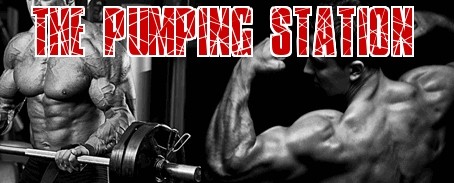Anatomy for Bodybuilding
Basic anatomy knowledge when you are a bodybuilder is the minimum requirement. You simply have to have the basic knowledge of where a muscle starts and ends. If you know the origin and insertion of a muscle you are training you will not only train it correctly but you will feel it better.
Muscle growth has been extensively studied over the last 30 years and what we have learnt is that making a light weight feel heavier will help you gain muscle. This only comes from understanding basic anatomy, where the muscle is and how it contracts is the minimum requirement if you want the muscle to grow.
The following basic muscle groups should be well understood by any bodybuilder who wants to see results. The list below includes only the very basic description of the muscle and how it functions.
The Shoulder Muscles:
The shoulders or deltoids often called delts by bodybuilders are divided into three distinct muscle groups. The three muscle groups of the deltoids are the anterior (front) deltoid, the medial (middle) deltoid and the posterior (rear) deltoid, which together act in helping abduction, which is pulling away from the axis as well as rotation and flexing of the axis.
The Back Muscles:
The muscles in the back are all interconnected and are divided into the traps, the middle back or rhomboids, the lats and lower back.
The traps or the trapezius muscle connect directly to the deltoids as well as the back muscles which support the weights of or in your arms and helps to retract and rotate the shoulder blades (scapulae).
Middle back (Rhomboids) help you to squeeze your shoulder blades together providing stability to the shoulder.
Lats (Latissimus dorsi muscle) help to pull your arm down as well as back and help keep your elbow close to your body.
Lower back muscles act as stabilizes to your spine and are an important part of your core strength.
The Chest Muscles:
The chest muscles are made of two primary muscle groups called the pectoralis major and the pectoralis minor both muscle groups help you pull one or both arms down as well as in towards the body as well as any forward movement.
The Arm Muscles:The arms are divided into three different muscle groups, the biceps, the triceps and the forearms. Each of these muscle groups have extensors (which are the muscles helping to extend the arm increasing the angle of the joint) and flexors (that help the arm muscles flex the arm decreasing the angle of the joint).
The Abdomen muscles:
The transversus abdominis is deep inside the abdomen muscle and directly effects body posture and supports the spine. The internal obliques lie on the side of the abdomen is not as deep and helps all rotation, bending including the important general support of the spine.
The external obliques lie on both sides of the abdomen/torso helping support, rotation and bending.
The rectus abdominis is the abdominal muscle we can see and for strength it is the least important of the abdominal group essentially providing spinal support including posture and showing of sort after six-pack.
The Lower body Muscles:
The lower body muscles or legs are the largest muscles in your body and should never be neglected. The legs consist of the quadriceps (quads), the glutes (gluteus maximus), the hamstrings and the calves.
Glutes are one of the largest body-parts in the body helping to extend as well as rotate the hip and to stabilize the pelvis.
Quadriceps very big muscle group help to flex the thighs and the hips including the extension of the leg and knee.
Hamstrings Helps to move the lower body through the hip allowing the knee to flex while stabilizing the pelvis and the hips.
Calves, the main function of the calf muscles are to help lift the heels off the floor.
Click Here to Sign Up for Your Free Bodybuilding Magazine Subscription
